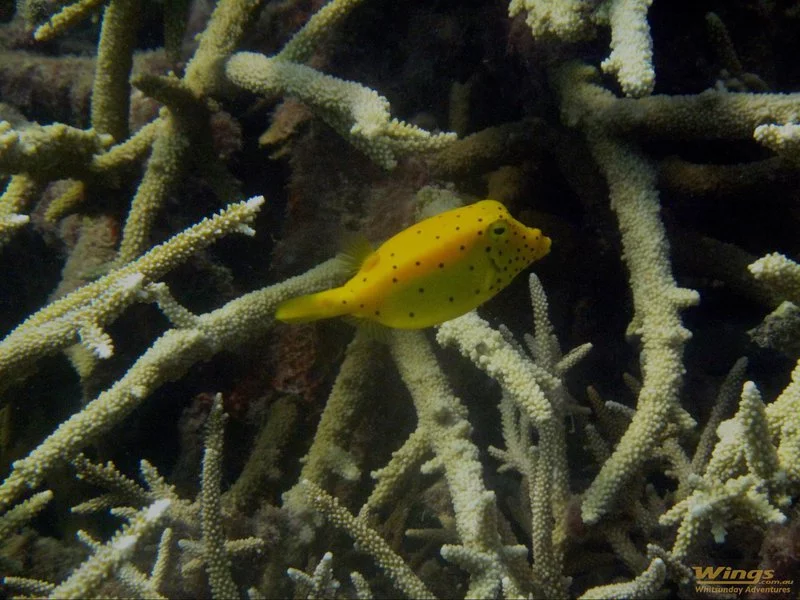Box fish belong to an order of fish called tetraodontiformes, this group includes fish like puffers, toadfish and triggerfish. The name boxfish comes from their shape, these fish literally have a hard armoured box shaped body. This body shape is not very streamlined and does not seem as though it would be a practical shape for a fish. It is thought that this shape destabilised the fish, which allows for greater range of movement at a faster pace. The instability is controlled by the box fish's pectoral fins and tail. Both of these factors together make these little fish highly manoeuvrable and agile and able to easily turn on a dime to avoid predators.
The yellow boxfish can be found in both tropical and temperate waters of the Indo-West Pacific region. Here in Australia they can be found from the mid west of Western Australia around the north and down to New South Wales. Their preferred habitat is both coral and rocky reefs in very shallow near shore waters to depths of around 40 meters. They can be found living in parts of the reef where there are crevices and caves which they can use to hide in.
As mentioned above the yellow boxfish has a rigid box shaped body called a carapace which is composed of fused plates and has openings for the fins mouth and eyes. Their skin is bright yellow and covered with black spots. As juveniles these spots are quite small and as they age the spots will begin to turn brown and even turn white with a black rim, some adults may change colour and have blueish/brown colour. This bright colouring is to advertise too would be predators that they are toxic and should not be eaten. The shape of these fish also changes as they age, juveniles have more of a rounded shape and as they mature the characteristic box shape begins to form. Once fully grown this species of boxfish can reach up to 45 centimetres, however it is more common to see them at sizes of less than 20 centimetres. When breeding males of the species will swim around the females showing off their bright colours. Once the female is sufficiently impressed they will swim upwards and release the eggs and sperm at the same time, the eggs are fertilised externally and are carried in the oceans currents until they hatch and swim down to a suitable reef.
Boxfish are active during the day and when they are not hiding in the reed from predators they are out and about looking for a tasty meal. The bulk of their feet is vegetarian as they spend most of their time grazing on algae. However when they have had enough of their algae salad they will happily hunt down small marine invertebrates including worms, crustaceans and even sponges. Their method for finding food is to use their small puckered mouth to blow jets of water out at the coral/seafloor to find anything that may be hiding.
There are not many animals on the reef who will attempt to eat this brightly coloured little fish, not only are they excellent at hiding and manoeuvring to avoid other fish but they also have a chemical defence. Like their cousins the pufferfish, boxfish also have a deadly toxin in their bodies. The toxin that the boxfish use is called Ostracitoxin which is unique to them. It is released in a slimy mucus from specialised skin cells when the fish feels threatened or stressed. Once in the water this toxin can be absorbed by the unfortunate fish trying to harm the boxfish and once in the animal's stream via the gills it has a haemolytic effect. This means that the fish affected will begin to suffocate and eventually die.

